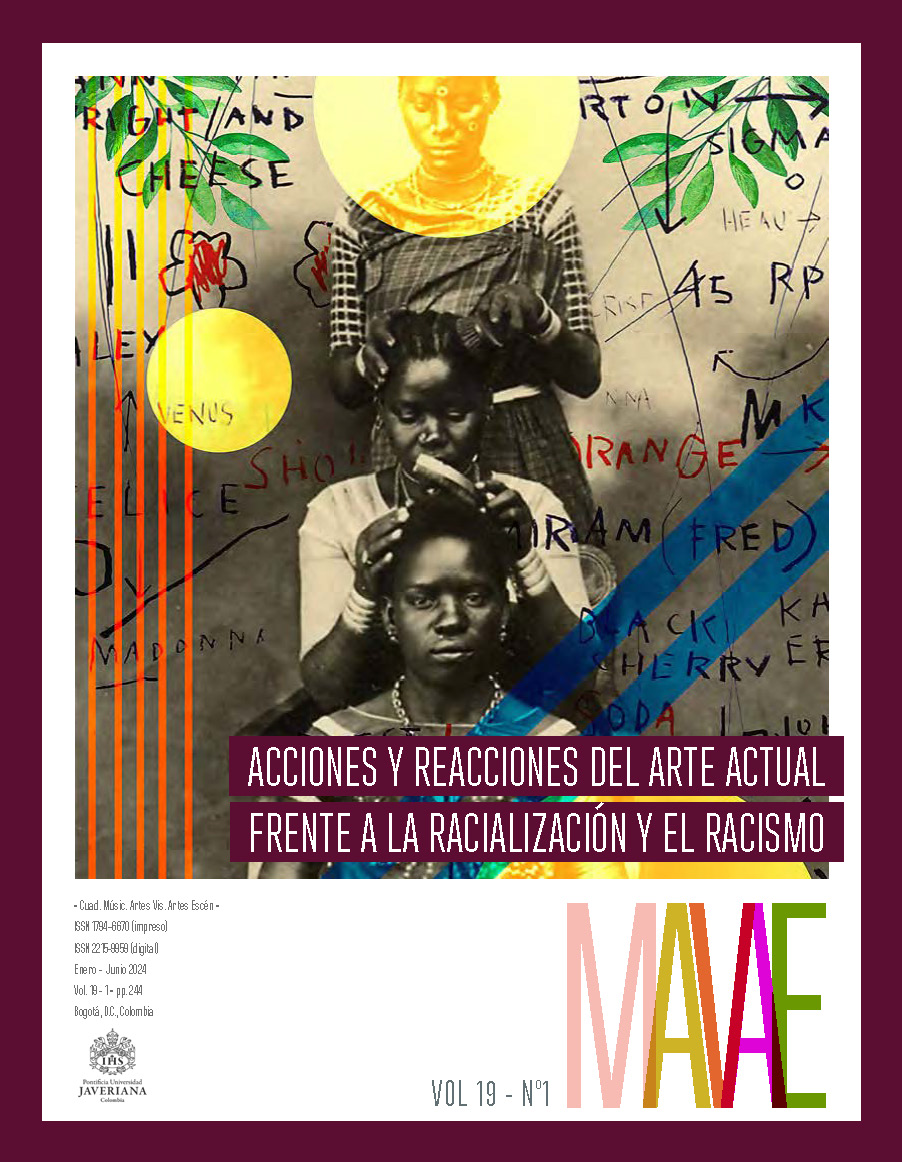Resumen
Este artículo presenta una reflexión en torno a la relación entre la obra de la artista Liliana Angulo y la crítica a la mirada colonial como vector configurador de la subjetividad en Latinoamérica. El recurso de Angulo de hacer visible la relación entre objetos domésticos y “negrita” da cuenta de la intersección entre género y raza en los prejuicios culturales de la sociedad colombiana y la mirada colonial heredada con la que se establece la jerarquía de clasificación de los cuerpos en esta. Para explorar esta relación y su posible resistencia expresada desde el arte, se desarrollarán tres análisis. Primero, la disposición del cuerpo femenino afrodescendiente en correlación con objetos domésticos que signan una jerarquía de dominación generizada y racializada encuentra resonancia en las maneras en que se ha forjado el sujeto colonial tanto en la circulación de un mimetismo como en la posibilidad de invertir los códigos del orden unívoco de la colonialidad y sus efectos en la gradiente del género y la raza. Segundo, en efecto, en la manera en que las mujeres de las imágenes de Angulo performan la relación con los objetos y articulan formas de expresión se puede plantear una potencia de expresión hereje que confronta estos códigos. Finalmente, la herejía, y el sujeto hereje, expresado en esa relación entre cuerpo y objetos en la obra de Angulo, pueden ser proyectados
como una línea estética del arte colombiano.
Arango, G. (1958). Primer manifiesto nadaísta. Medellín: Gonzalo Arango.
Barriendos, Joaquín. 2011. “La colonialidad del ver: Hacia un nuevo diálogo visual interepistémico”. Nómadas 35 (2011): 13-29.
http://www.scielo.org.co/pdf/noma/n35/n35a02.pdf
Bhabha, Homi K. (2002). El lugar de la cultura. Buenos Aires: Manantial.
Boyer, Amalia. 2009. “Archipelia: Lugar de la relación entre (geo) estética y poética”. Nómadas 31 (2009): 13-25. http://www.
scielo.org.co/pdf/noma/n31/n31a2.pdf
Caro Lopera, Antonio José. 2014. Antonio Caro: Símbolo Nacional.Colección de arte contemporáneo. Bogotá: Seguros Bolívar.
Chaparro, Adolfo. 2020. Modernidades periféricas: Archivos para la historia conceptual de América Latina. Barcelona: Herder.
Escobar, Arturo. 2007. La invención del tercer mundo: Construcción y deconstrucción del desarrollo. Caracas: Fundación editorial
el perro y la rana. https://cronicon.net/paginas/Documentos/No.10.pdf
Fanon, Frantz. 2009. Piel negra, máscaras blancas. Madrid: Akal.
Giraldo Escobar, Sol Astrid. 2014. Retratos en blanco y afro: Liliana Angulo. Bogotá: Ministerio de Cultura.
Guisado Bermúdez, Jaidy Victoria. 2017. “Perspectivas de la producciónvisual en la representación de la mujer negra”. https://nodoarte.
com/2017/03/02/perspectivas-de-la-produccion-visual-en-larepresentacion-de-la-mujer-negra/
Richard, N. (2007). Fracturas de la memoria: Arte y pensamiento crítico. Buenos Aires: Siglo XXI. Universidad de los Andes. 2023. “Catálogo Razonado Beatriz González”. https://bga.uniandes.edu.co/
Valenzuela Klenner Galería. 2023. “Liliana Angulo”. https://docplayer.es/74666965-Liliana-angulo-valenzuela-klenner-galeria-carrera-
-26b-26-tel-bogota-colombia.html

Esta obra está bajo una licencia internacional Creative Commons Atribución 4.0.
Derechos de autor 2023 Fabrizio Pineda Repizo


